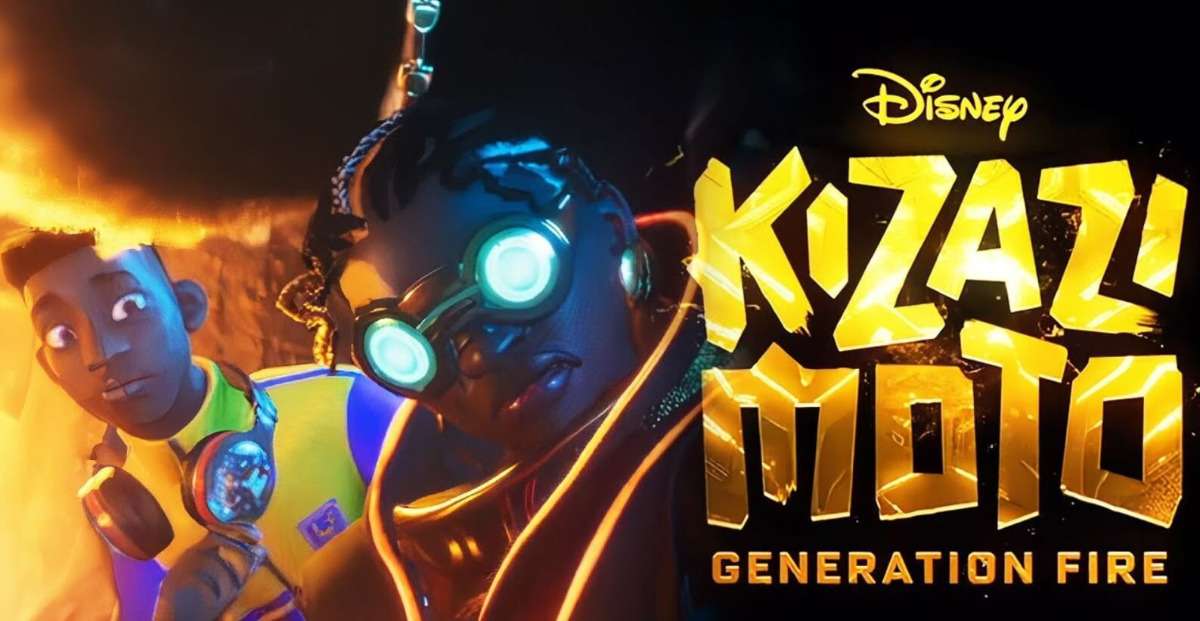I am ecstatic to see African animators and storytellers making their mark on the global scene with the premiere of Kizazi Moto: Generation Fire (trailer) as an animation enthusiast and writer from Zimbabwe. It is inspiring to see Zimbabwean creators using their skills to produce a distinctive and genuine animated series.
For many years, there has been a significant underrepresentation of animation in Africa, and there have been few to no opportunities for African animators to demonstrate their talents on a worldwide level. However, this pattern is shifting with the publication of Kizazi Moto: Generation Fire and people are starting to take note of the great talent that Africa has to offer.
The series' executive producer was chosen to be Peter Ramsey, the Academy Award–winning director of Spider-Man: Into the Spider-Verse. The principal studio involved in the production was Triggerfish, along with other animation studios in Africa, while Tendayi Nyeke and Anthony Silverston served as the supervising producers.
Watching Kizazi Moto: Generation Fire's sixth episode, "Mukudzei," made me especially happy. This episode, which is set in Zimbabwe, tells the tale of a teenage influencer who defaces a revered monument at the Great Zimbabwe Ruins as a result of social media "peer pressure." The protagonist is consequently taken to a futuristic, utopian Zimbabwe where they must survive in an environment that is very dissimilar from their own.
'Mukudzei' stands out for its accurate portrayal of Zimbabwean history and culture. Mukudzei and Rumbidzai, the episode's two main actors, both have Zimbabwean names, which adds to the story's authenticity. The episode is a fantastic ride that shows how the Great Zimbabwe Ruins would have looked if it had never been colonized.
The episode's storyline is succinct but powerful, leaving viewers with a lasting impression. The soundtrack, which was created by Zimbabwean musician Poptain, further enhances the impact of the episode by giving the narrative additional nuance and emotion.
'Mukudzei' is a must-see for everyone who like animation and is curious about African views on science fiction, in general. The episode stands out in the Kizazi Moto series due to its distinctive plot and accurate portrayal of Zimbabwean culture.
The fact that the series is accessible on Disney+ serves as more evidence of the caliber and notoriety that African animators can garner. It is a credit to the team's dedication and hard work, which includes the Zimbabwean contributors that helped create the series.
I am happy to see that African animation is now receiving the attention it merits, and I'm interested to see what the future of the sector holds. It is evident that the African animation scene is expanding with the release of Kizazi Moto: Generation Fire and other recent African animations, and I am eager to see more African takes on the future and science fiction in the years to come.
For many years, there has been a significant underrepresentation of animation in Africa, and there have been few to no opportunities for African animators to demonstrate their talents on a worldwide level. However, this pattern is shifting with the publication of Kizazi Moto: Generation Fire and people are starting to take note of the great talent that Africa has to offer.
The series' executive producer was chosen to be Peter Ramsey, the Academy Award–winning director of Spider-Man: Into the Spider-Verse. The principal studio involved in the production was Triggerfish, along with other animation studios in Africa, while Tendayi Nyeke and Anthony Silverston served as the supervising producers.
Watching Kizazi Moto: Generation Fire's sixth episode, "Mukudzei," made me especially happy. This episode, which is set in Zimbabwe, tells the tale of a teenage influencer who defaces a revered monument at the Great Zimbabwe Ruins as a result of social media "peer pressure." The protagonist is consequently taken to a futuristic, utopian Zimbabwe where they must survive in an environment that is very dissimilar from their own.
'Mukudzei' stands out for its accurate portrayal of Zimbabwean history and culture. Mukudzei and Rumbidzai, the episode's two main actors, both have Zimbabwean names, which adds to the story's authenticity. The episode is a fantastic ride that shows how the Great Zimbabwe Ruins would have looked if it had never been colonized.
The episode's storyline is succinct but powerful, leaving viewers with a lasting impression. The soundtrack, which was created by Zimbabwean musician Poptain, further enhances the impact of the episode by giving the narrative additional nuance and emotion.
'Mukudzei' is a must-see for everyone who like animation and is curious about African views on science fiction, in general. The episode stands out in the Kizazi Moto series due to its distinctive plot and accurate portrayal of Zimbabwean culture.
The fact that the series is accessible on Disney+ serves as more evidence of the caliber and notoriety that African animators can garner. It is a credit to the team's dedication and hard work, which includes the Zimbabwean contributors that helped create the series.
I am happy to see that African animation is now receiving the attention it merits, and I'm interested to see what the future of the sector holds. It is evident that the African animation scene is expanding with the release of Kizazi Moto: Generation Fire and other recent African animations, and I am eager to see more African takes on the future and science fiction in the years to come.
Join WhatsApp Channel
Stay up-to-date with the latest technology news and trends by joining our exclusive WhatsApp channel! Get instant access to breaking news, insightful articles
 TechNews
TechNews
Loading comments...







Please login or create account to comment.